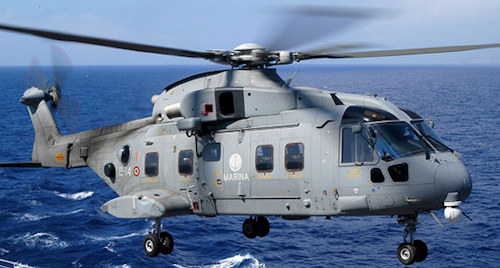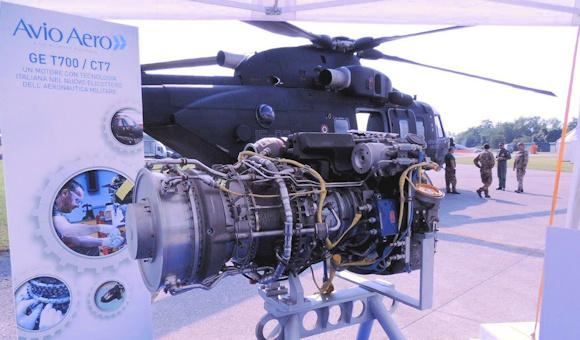Just under a year ago, looking for information on a particular process of industrial construction, the "additive manufacturing", we came across the new engines of GE Aviation ATP, today GE Catalyst, realized thanks to the technological contribution of Avio Aero, and how much we discovered, prompted us to talk about it and give it news to share a result of true excellence of our aerospace industry (v.articolo).
After a few months, a new search for something else, has led us to discover many things little known and equally flattering for our aeronautics industry.
We started from a historical-industrial research on the New SACA Motori of Brindisi, and instead we have come to discover some surprising information on engines in production for over 30 years and on the "numbers" of the current manufacturing company, which give Italy a place of absolute respect in Europe and in the world.
There are many things to say about different topics, but fortunately there is only one starting point: the General Electric Aviation T700 / CT7 engine family.
It is a family of very successful engines: 100 million flight hours with 20000 units produced with powers included between 1500 and 3000 SHP1. The founder of the family is the "base model" T700 military, while the CT7 version reveals with its "C" the "Civil" certification.

Equip around 25 very different types of helicopters: from Sikorsky "Blackhawk" e "Seahawk" at the Boeing AH-64 "Apache" up to the most modern and versatile Leonardo Helicopters AW-101 and AW-189 and Sikorsky S-92.
Of these engines, Avio Aero (even before the acquisition of GE) designs and manufactures up to 40% of components and continues its research and development (even independently) in spite of over 30 years of entry into production.
What does this mean? It means that when we watch a newscast in which we see reports of actions in which these helicopters have become protagonists, we must allow ourselves a moment of distraction and think that in the success of certain military operations of primary importance there is a lot 'of merit of the Italian industry, as almost half of what makes flying that helicopter was built between Turin and Pomigliano d'Arco.
We would like to point out that the operating scenario in which it is called to work a "Seahawk" it is very different from the one in which it operates "Apache": The first carries a heavy load on board with stresses ranging from the risk of salt corrosion to the ingestion of water sprays or to the prolonged maintenance at full load of the maximum driving power; the second one is instead exposed to risks such as sand ingestion and consequent vitrification of the internal "hot parts", to the risk of overheating and lubrication problems with consequent risks of structural breakage. Diametrically opposed scenarios, but the engine that is entrusted with the success of the operation and the safety of those who must bring it to completion is the same for both cases.

In all these years of honored service, this engine has shown incredible reliability in spite of the most demanding conditions of use. What's the secret?
Surely starting from a project to meet the most stringent military requirements is already an optimal starting point. Then, over 30 years of development have allowed continuous refinements, thanks to the continuous introduction of every best available technological find (advanced materials, aerodynamic profiles of turbine and compressor vanes, FADEC engine digital control systems)2).
Performance and consumption have improved continuously without compromising the reliability and robustness demonstrated since the first versions.
Who benefits most from these qualities?
Surprisingly, the best beneficiary is the civil market.
One example among all: the use on the offshore oil platform. In fact, there are conditions of employment comparable to those of the previous example of the "Seahawk".
Here then explained the choice already made to benefit the GE CT7 by 130 operators in 50 Countries: many are civil operators (they are numbers, these hardly achievable if there was only a military market), who knew how to understand the advantages of obtaining engines that benefit from the strictest design requirements.

In military applications, on the other hand, being able to rely on a "mechanical platform" suitable for any type of use, allows the final characterization of the engine to be transferred to the FADEC electronic management software, leaving space for further mechanical improvements.
This is not a small detail either, because this means simplifying logistics as much as possible. An example for everyone here too: you can remove a motor from a "Blackhawk " and the US Army and mount it on a "Apache" or on a "Super Cobra" of the US Marines, without having to settle for "cannibalize" pieces to be disassembled, reassemble and test the bench before and in flight later. The entire engine is replaced, with enormous advantages in terms of time and logistics, and the detail of the repair is sent back to another location. And in an operational scenario like the one in which some of the helicopters already mentioned work, this is an incredible benefit.
We have said about the constant triennial evolution of GE T700 / CT7.
It is good to know that Italy is not only called to the role (for something already more than flattering) of partner manufacturer of highly specialized components: Avio Aero contributes to the development of some components (especially the turbine and other "noble parts") exclusively for GE Aviation. Then, for engines destined for the Italian Armed Forces (for example for the NH-90 of the Navy and the Army or AW-101 of the Air Force and EH-101 of the Navy), to that 40% of parts built on their own, the entire assembly, the resolution and the maintenance are added.

These are made in the Brindisi plant ... from which our research started, as it is precisely the former factory of the New SACA Motori!
Does all this mean? That when we see a helicopter under a government agency, the contribution of this Italian company that has built the 40% engine, rises up to a good 60%. Percentage that would still go up if we took into account the research contribution provided by the 12 Italian Universities and the 8 research centers that collaborate with Avio Aero.
In Turin there is (indeed, there was!) Even FIAT, and we are all aware of how much of the automobile production has been transferred to Poland, with a consequent chasm in Italian occupation.
Avio Aero, which was born in the 1908 from a rib of FIAT ("FIAT Aviation") today employs about 4800 employees that make up about 30% of the presence of General Electric Aviation in Europe and these 4200 are in Italy.
Avio Aero also has a manufacturing facility in Poland and a research and development center, but in total there are fewer employees than the 700 employees of the Brindisi plant alone.

A welcome contrast, even if we are sorry for Italians to be missing a test bench for turbines of world excellence: it could be the right flagship of the Rivalta Research Center of Turin or the testing department of Pomigliano d'Arco , but evidently Poland has been able to give more advantageous conditions than ours, not only to automotive assembly lines.
Of all these numbers of workforce, the GE T700 / CT7 engine (alone) gives work to about 200 "equivalent persons" (ie the number of technicians and workers that derive from the number of hours of employment on this product).
The most interesting thing to note is that with a greater diffusion in the civil and military market, for which there is still a fair amount of potential customers, these numbers that highlight the success of an "evergreen" of excellent quality could still grow significantly .
So, if we ended our previous article on the GE ATP turboprop engine by saying that General Electric's choice of a partner like Avio Aero for that enterprise was blessed from the historical point of view, rediscover now all of these "hidden qualities" of GE T700 / CT7 makes us confident for the future, for the appreciation and recognition that these our best technical-productive skills will consolidate.
1 SHP = "Shaft Horse Power" (power horses to the tree)
2 FADEC = Full-Authority Digital Engine Control
(photo: Avio Aero / US Navy / US Army / Navy)












